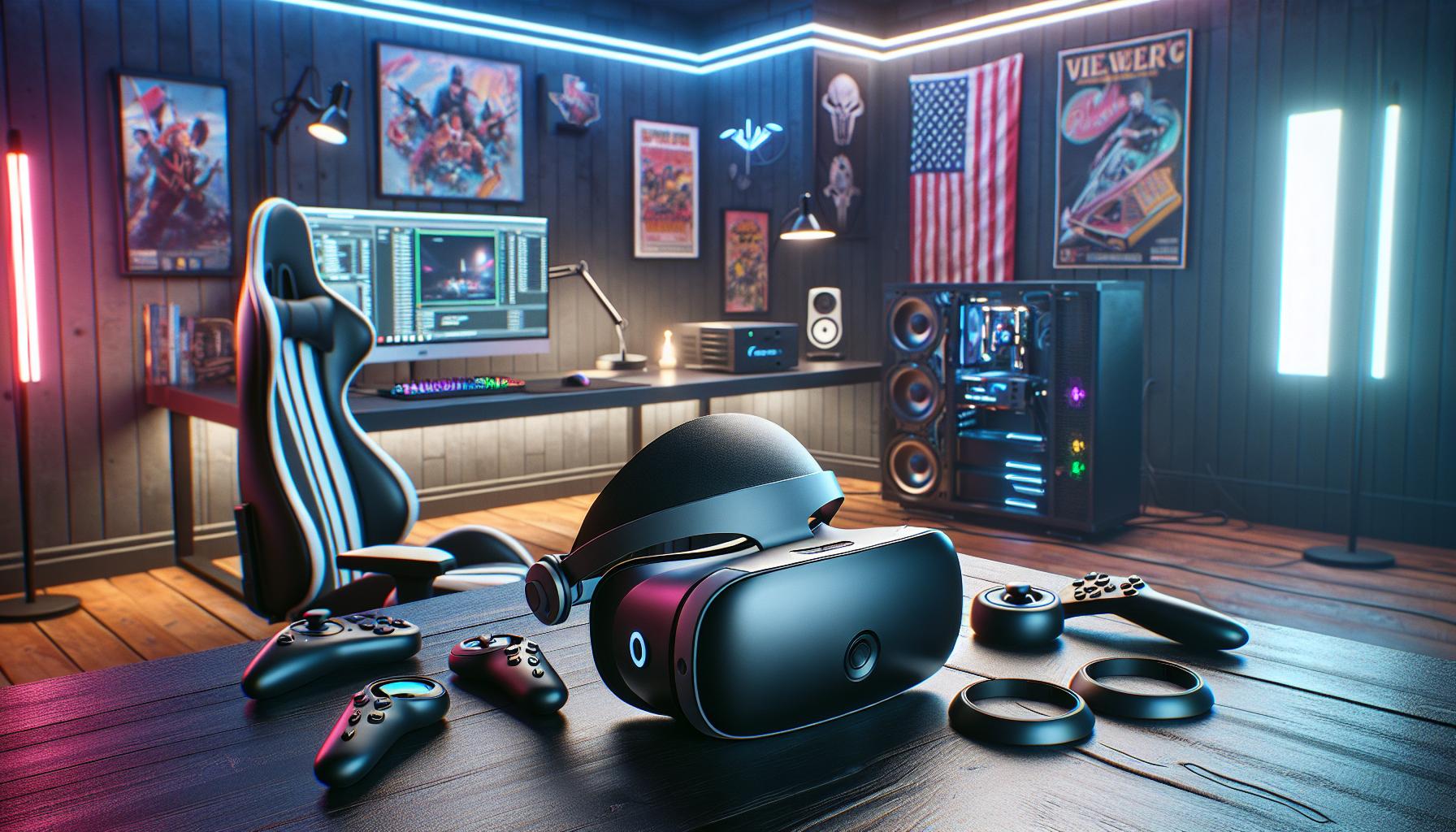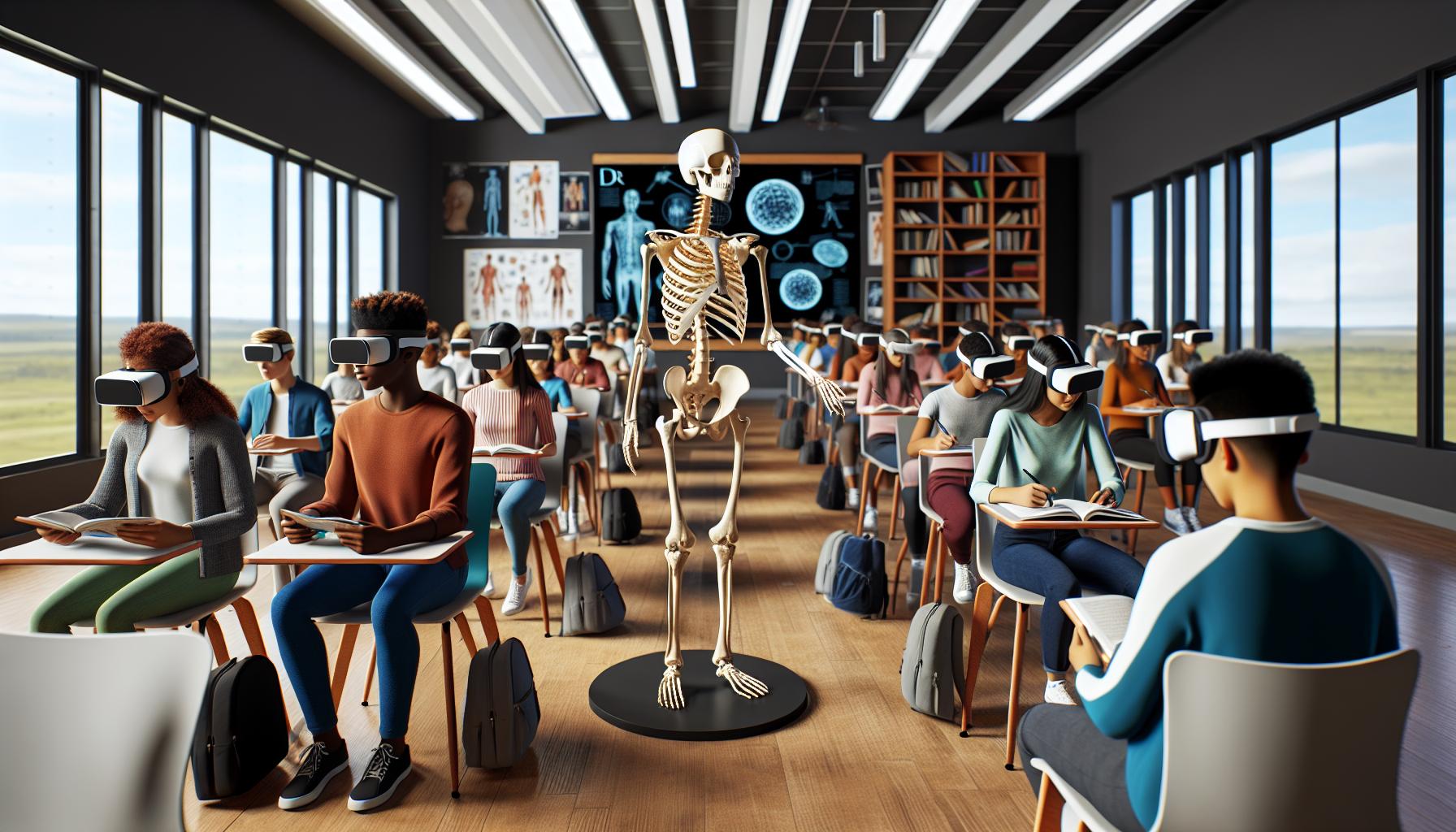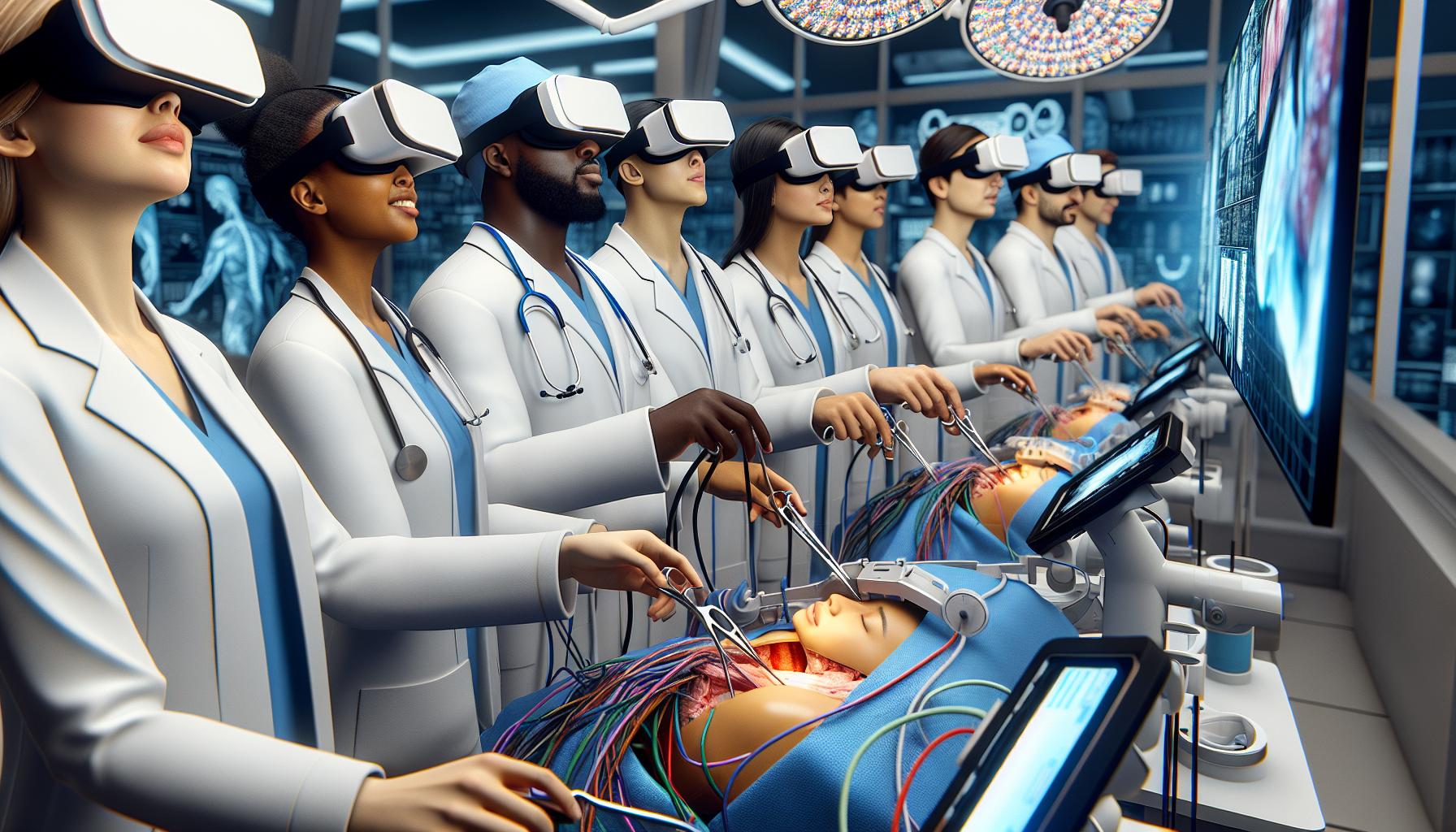Virtual reality isn’t just about strapping on a fancy headset and pretending to be somewhere else – it’s revolutionizing the way humans interact with technology and each other. From healthcare and education to entertainment and business training VR technology continues to push boundaries and create new possibilities that were once confined to science fiction.
Why Is Virtual Reality Important? Think of VR as the Swiss Army knife of the digital age. It’s transforming surgical training allowing doctors to practice complex procedures without risk improving student engagement through immersive learning experiences and enabling architects to walk clients through buildings before they’re even built. Beyond its practical applications VR has become a powerful tool for fostering empathy breaking down geographical barriers and creating shared experiences that transcend physical limitations.
Why Is Virtual Reality Important
Virtual reality technology creates immersive digital environments that simulate real-world experiences through specialized hardware and software components. This technology enables users to interact with computer-generated surroundings in three-dimensional space.
Key Components of VR Systems
VR systems incorporate five essential components to deliver immersive experiences:
- Head-Mounted Display (HMD): Oculus Quest 2 or Valve Index devices provide stereoscopic 3D displays with motion tracking sensors.
- Motion Controllers: Touch-enabled input devices track hand movements and gestures for natural interaction in virtual spaces.
- Tracking Systems: External sensors or inside-out tracking cameras monitor user position and orientation in real-time.
- Processing Unit: High-performance computers or integrated processors render graphics and process spatial data at 90+ frames per second.
- Audio System: Spatial audio delivers directional sound cues that enhance immersion and presence in virtual environments.
How Virtual Reality Works
VR technology operates through three primary mechanisms:
- Stereoscopic Display: Two slightly offset images create depth perception by displaying separate views for each eye.
- Motion Tracking: Accelerometers and gyroscopes detect head movements at 1000+ times per second to update visual perspective.
- Rendering Pipeline: Graphics processors generate:
- Real-time 3D environments
- Physics simulations
- Interactive responses to user inputs
The system maintains presence through low-latency processing between user actions and visual feedback, typically achieving response times under 20 milliseconds.
The Evolution of Virtual Reality

Virtual reality traces its roots back to the 1960s, evolving from basic stereoscopic devices to sophisticated immersive systems. The technology’s journey spans six decades of innovation, experimentation and technological advancement.
From Early Concepts to Modern Applications
Ivan Sutherland created the first VR head-mounted display in 1968, called the Sword of Damocles. The 1980s saw NASA developing the Virtual Interface Environment Workstation (VIEW) for astronaut training. Gaming companies introduced consumer VR in the 1990s, with Sega VR and Nintendo’s Virtual Boy leading the charge. The 2010s marked VR’s transformation into a mainstream technology, expanding beyond gaming into healthcare, education, architecture and military applications.
Major Technological Breakthroughs
Key innovations revolutionized VR development:
- Oculus Rift’s 2012 Kickstarter campaign introduced affordable consumer VR headsets
- HTC Vive launched room-scale tracking in 2016, enabling full body movement
- Foveated rendering emerged in 2018, optimizing graphics processing through eye tracking
- Inside-out tracking eliminated external sensors in 2019, simplifying VR setup
- Hand tracking technology in 2020 removed the need for controllers in many applications
These advances increased display resolution from 640×480 pixels to 4K per eye, reduced latency from 50ms to under 20ms and expanded the field of view from 90 degrees to 120 degrees.
Impact on Education and Training

Virtual reality transforms traditional educational methods through immersive technology. The integration of VR in educational settings creates dynamic learning environments that enhance knowledge retention and skills development.
Immersive Learning Experiences
VR technology enables students to interact with 3D models of complex scientific concepts like molecular structures atomic behavior or astronomical phenomena. Medical students examine detailed anatomical models from every angle gaining deeper understanding of human physiology. History classes transport students to ancient civilizations allowing them to explore historical sites architecture cultural practices in their original context. Math concepts come alive as students manipulate geometric shapes solve equations in three-dimensional space using virtual tools. Language learners practice conversations with AI-powered virtual natives in realistic cultural settings increasing fluency confidence through repeated practice.
Professional Skills Development
VR training platforms simulate high-stakes scenarios for medical procedures emergency response protocols industrial operations without real-world risks. Surgeons practice complex procedures multiple times before performing actual operations improving surgical precision reducing errors. Aviation training incorporates VR flight simulators enabling pilots to master navigation systems emergency protocols in various weather conditions. Manufacturing workers learn assembly line procedures equipment maintenance through interactive VR modules reducing training time costs. Corporate training programs use VR for soft skills development allowing employees to practice leadership communication conflict resolution through realistic workplace scenarios role-playing exercises.
Applications in Healthcare

Virtual reality transforms healthcare delivery through immersive solutions for medical training surgical procedures mental health treatments. VR applications in healthcare enable risk-free practice environments precise surgical planning enhanced therapeutic interventions.
Medical Training and Surgery
VR surgical simulators provide realistic training environments for medical students residents practicing complex procedures. Surgeons use VR platforms to plan operations by examining detailed 3D anatomical models creating precise surgical pathways before entering the operating room. Medical institutions report a 40% reduction in surgical errors among practitioners who train with VR systems. The technology enables real-time collaboration between surgeons in different locations reviewing patient cases analyzing surgical approaches. VR applications integrate haptic feedback systems allowing trainees to feel tissue resistance instrument handling during simulated procedures.
Mental Health Treatment
VR exposure therapy treats anxiety disorders phobias PTSD by creating controlled environments for patients to confront fears. Studies show 70% of patients experiencing reduced anxiety symptoms after 8-12 VR therapy sessions. Therapists customize virtual scenarios adjusting intensity levels based on patient progress response. Mental health professionals use VR environments for meditation mindfulness exercises cognitive behavioral therapy. The technology creates immersive settings for social skills training helping patients with autism spectrum disorders practice interpersonal interactions. Patients engage with virtual avatars scenarios designed to build emotional resilience coping mechanisms.
Business and Enterprise Benefits
Virtual reality transforms traditional business operations by enabling immersive digital workspaces and innovative product development solutions. The technology creates measurable value across multiple business functions.
Virtual Collaboration and Remote Work
Virtual reality enhances remote collaboration through immersive 3D workspaces where teams interact naturally regardless of physical location. Platforms like Meta Horizon Workroom and Microsoft Mesh enable participants to share virtual offices complete with whiteboards diagrams and 3D models. Teams report 35% faster decision-making in VR meetings compared to video calls due to improved spatial awareness and nonverbal communication. Global organizations leverage VR to reduce travel costs by 60% while maintaining effective team dynamics through virtual presentations training sessions and project reviews.
Product Design and Prototyping
Virtual reality accelerates product development cycles by enabling rapid prototyping and design iteration in digital environments. Companies like Ford BMW and Boeing use VR to evaluate vehicle designs before building physical models saving up to $8 million per prototype. Design teams manipulate 3D models in real-time examining ergonomics aesthetics and functionality from any angle. VR platforms integrate with CAD software allowing engineers to spot design flaws early detect interference issues and validate assembly processes. Manufacturing firms report 40% faster product development cycles through VR-based design reviews and virtual factory planning.
Entertainment and Gaming Revolution
Virtual reality transforms entertainment by creating immersive digital experiences that engage multiple senses simultaneously. This revolutionary technology redefines how people interact with digital content through advanced motion tracking systems paired with high-fidelity graphics.
New Dimensions of Interactive Media
VR gaming elevates player engagement through full-body interactions in 360-degree environments. Popular VR titles like “Half-Life: Alyx” demonstrate advanced physics simulations enabling players to manipulate virtual objects naturally. Gaming mechanics in VR incorporate physical movements such as ducking crouching turning climbing making the experience more dynamic than traditional gaming platforms. The technology supports haptic feedback systems that provide tactile sensations matching onscreen actions creating a more realistic gaming experience. Major gaming studios including Ubisoft EA Valve have developed dedicated VR content divisions expanding the library of available experiences.
Social VR Experiences
Social VR platforms create shared digital spaces where users interact with others in real-time through customizable avatars. Platforms like VRChat Meta Horizon Worlds AltspaceVR host virtual concerts meetups educational sessions bringing together communities across geographical boundaries. Users express themselves through body language hand gestures facial expressions making social interactions feel natural authentic. These platforms support collaborative activities such as watching movies playing games creating art together in virtual spaces. Companies organize virtual conferences trade shows product launches reducing travel costs while maintaining meaningful networking opportunities. The integration of spatial audio technology ensures conversations feel natural with sound traveling realistically through virtual environments.
Future Potential and Opportunities
Virtual reality continues to evolve rapidly, opening new possibilities across industries and creating transformative opportunities for businesses and consumers alike. The technology’s advancement drives innovation and shapes the future of human interaction with digital environments.
Emerging Use Cases
Virtual reality extends beyond traditional applications into groundbreaking territories. Remote healthcare platforms now enable doctors to conduct virtual consultations with enhanced diagnostic capabilities through 3D visualization. Architecture firms create interactive walkthroughs of unbuilt structures, allowing clients to experience spaces before construction begins. Educational institutions implement VR laboratories for complex scientific experiments. Digital tourism platforms transport users to historical sites with authentic period reconstructions. Manufacturing facilities utilize VR for equipment maintenance training with real-time data overlay. Social platforms develop virtual concert venues where artists perform live to global audiences through photorealistic avatars.
Market Growth Predictions
The virtual reality market demonstrates substantial growth trajectories across key sectors:
| Sector | Projected Growth by 2027 | Key Growth Drivers |
|---|---|---|
| Gaming | $92.3 billion | Immersive multiplayer experiences |
| Healthcare | $42.8 billion | Surgical training platforms |
| Education | $32.9 billion | Virtual classrooms & labs |
| Enterprise | $56.5 billion | Remote collaboration tools |
Major tech companies increase VR investments by 45% annually. The consumer VR device market expands at 28% CAGR. Enterprise adoption rates show 65% growth in training applications. Healthcare implementations rise by 38% yearly. These metrics indicate accelerated market maturation through 2025.
VR Tech
Why Is Virtual Reality Important? Virtual reality stands as a revolutionary force that’s reshaping how humans interact learn work and play. Its importance extends far beyond gaming into crucial sectors like healthcare education and business where it continues to break new ground in training innovation and collaboration.
The technology’s ability to create immersive risk-free environments while reducing costs and improving outcomes makes it an invaluable tool for the future. As VR technology advances its applications will only grow creating new opportunities across industries and transforming how society approaches complex challenges.
The journey of VR has only begun and its continued evolution promises to deliver even more groundbreaking solutions that will further cement its position as an essential technology of our time.

